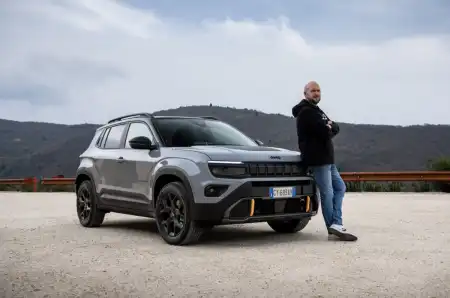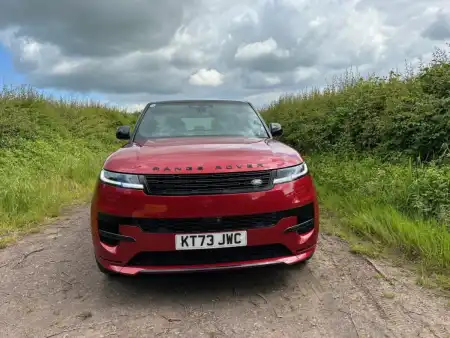- Low CO2 emissions will appeal to business drivers
- Ride is comfortable
- Running costs are low
- CVT gearbox is noisy
- Rivals are more fun to drive
- Doesn’t feel as quick as the figures suggest
Introduction
Toyota has a corporate target of making 50 per cent of its models hybrid by 2020 – you may think that sounds like pie in the sky but if you look at the figures, the Japanese maker should achieve this aim. At present, it already sells the Prius and the Auris Hybrid and these models make up 26.4 per cent in 2015 of hybrid models being sold by the car giant. However, can it turn the Rav4 hybrid in to a success story? Only time will tell. Read on to find out how we rated this hybrid model from Toyota.
On The Road
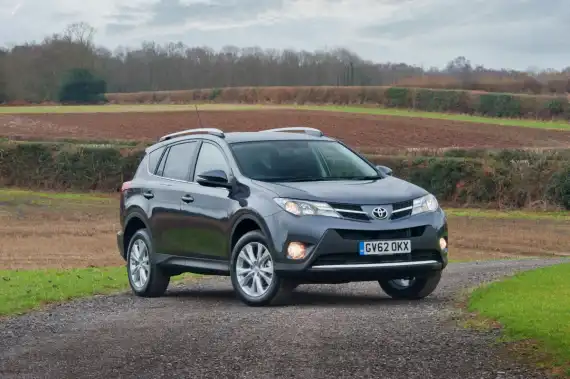
Performance
The Rav4 Hybrid is the most powerful version of the SUV to be sold in Europe while it is also Toyota’s first hybrid SUV. The full hybrid powertrain is a 2.5-litre Atkinson Cycle petrol engine aligned to a powerful electric motor. This means the total output the Rav4 hybrid produces is a heady 194bhp. This means the Rav4 Hybrid will complete the benchmark sprint in 8.4 seconds and has a top speed of 112mph whether you opt for the FWD or the AWD version. The problem with the Rav4 Hybrid is that it doesn’t feel quick, the engine is noisy due to the CVT automatic gearbox meaning driving enthusiastically is more of a chore. Our advice is to keep the heavy right foot at bay and drive this version as a smoothly. The Rav4 Hybrid is certainly aimed at the Chelsea Tractor brigade and not those looking for outright power.
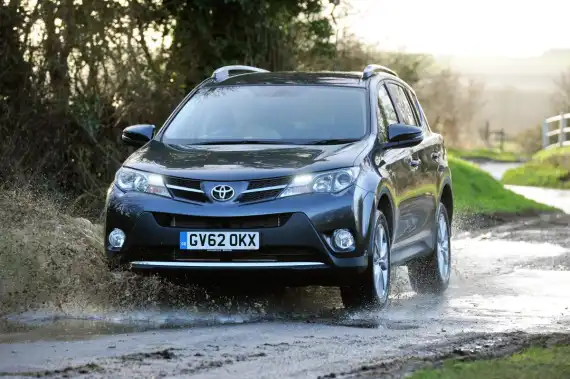
Ride Handling
As we mentioned the Rav4 Hybrid is aimed at the Chelsea Tractor brigade and also those company car drivers wanting an SUV but with low CO2 emissions – this is not one for driving enthusiasts largely down to the CVT gearbox. The constant whine is irritating while paddle shifters would at least help to give the driver a tad more control of what gear to be in, unfortunately paddles are not available. In FWD, the car struggles for grip when pushing on while the AWD version does not offer anything better in the driving stakes. Rivals including the BMW X1 are better for enthusiastic drivers looking at this type of car.
Styling
Comfort levels about average. There is a bit of road, wind and tyre noise in the cabin but the most annoying irritation is the whine of the CVT gearbox. A manual ‘box would be a much better idea and would make the cabin a much more pleasant environment to spend time in. Up front, the seats for driver and passenger offer a good level of support.
In The Car
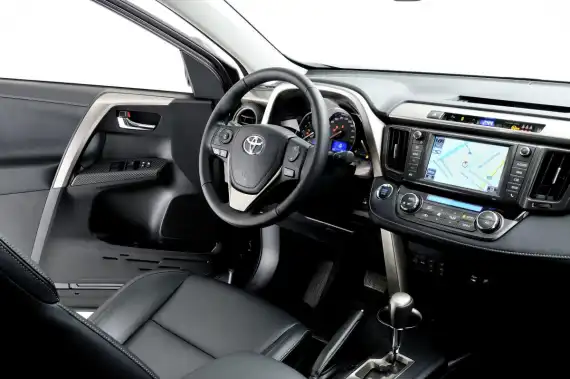
Behind the Wheel
The Rav4 Hybrid starts from the mid-level Business Edition Plus trim. Standard kit includes LED front and rear lights, a power tailgate, keyless entry, dual zone aircon, front fog lights, rear view camera and 17-inch alloys.
Icon trim adds 18-inch alloys, LED headlights, combination leather and Alcantara upholstery, electrically adjustable driver’s seat (with power-adjustable table lumbar support), heated front seats and an Alcantara dash finish and an upgraded satnav.
The flagship Excel grade adds leather upholstery, roof rails and rear parking sensors.

Space & Practicality
With the seats in place the Rav4 Hybrid offers 501 litres which is about average in this size of car, however, this is 46 litres less than the standard Rav4. Fold the seats flat and the boot space expands to 1,633 litres. This again is less than the standard car, by 102 litres, which is an awful lot of space especially if you have a sporty lifestyle or lots of family gear to pack in.
On the upside, there are numerous storage solutions with well-positioned drinks holders that do not interfere with the handbrake. The door pockets are around average while the glovebox is of a decent size.
Ownership
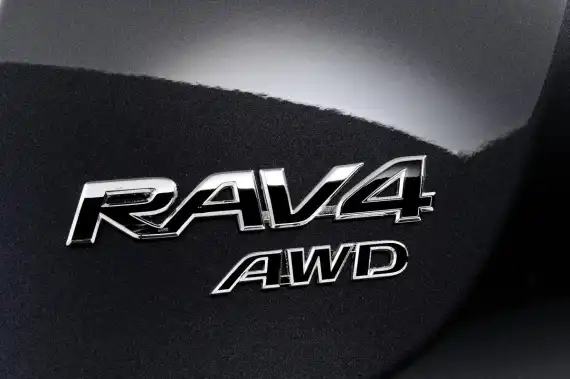
Running Costs
Running costs on this Toyota Rav4 Hybrid are fairly good. The Hybrid model starts from £26,195. Toyota claims a combined economy of 57.6mpg for the FWD Hybrid version and 55.4mpg for the AWD model, both figures are slightly less economical than the standard 2.0-litre D-4D diesel in FWD as it has a claimed average economy of 60.1mpg. The Hybrid, however, emits less, thanks to the electric motor, it has a CO2 of 115g/km whereas the FWD diesel emits 123g/km and the 2.0-litre petrol unit emits 152g/km of CO2.
Quality & Reliability
Toyota models are made to last the test of time and the Rav4 mechanicals should be as good as what has gone before. However, there are a few plastics that look a little cheap such as some of the material used around the dash. While the boot cover felt flimsy and heavy use may mean that it may survive the test of time.
Toyota has again shown great faith in its products by offering a five-year or 100,000 mile warranty (whichever comes sooner). The moving parts are all proven in other vehicles while there is less to go wrong on this hybrid version as there are fewer moving parts.

Safety & Security
Safety is high on Toyota’s agenda. Standard kit includes driver and passenger front and side airbags, curtain airbags, driver’s knee airbag, and a front passenger airbag cut-off switch. Front seatbelts with electronic load retractors, pretensioners and load limiters, rear seatbelt s with electronic load retractors, front seat warning light and buzzer and whiplash injury lessening front seats, two Isofix child seat fixings, ABS, EBD, Brake Assist, traction control and vehicle stability control.
All Rav4 Hybrid models apart from the entry –level Active are available with the optional Toyota Safety Sense. This pack includes a pre-collision system, adaptive cruise control, lane departure alert, road sign assist, automatic high beam and trailer sway control.
The trailer sway control system will automatically integrate braking and engine torque to bring a trailer back under control. It works by combining the deceleration force with selective force of individual wheels to counteract a sway-in-induced yaw movement of the trailer. When the system is in operation, the Rav4’s brake lights are illuminated to warn following drivers.

